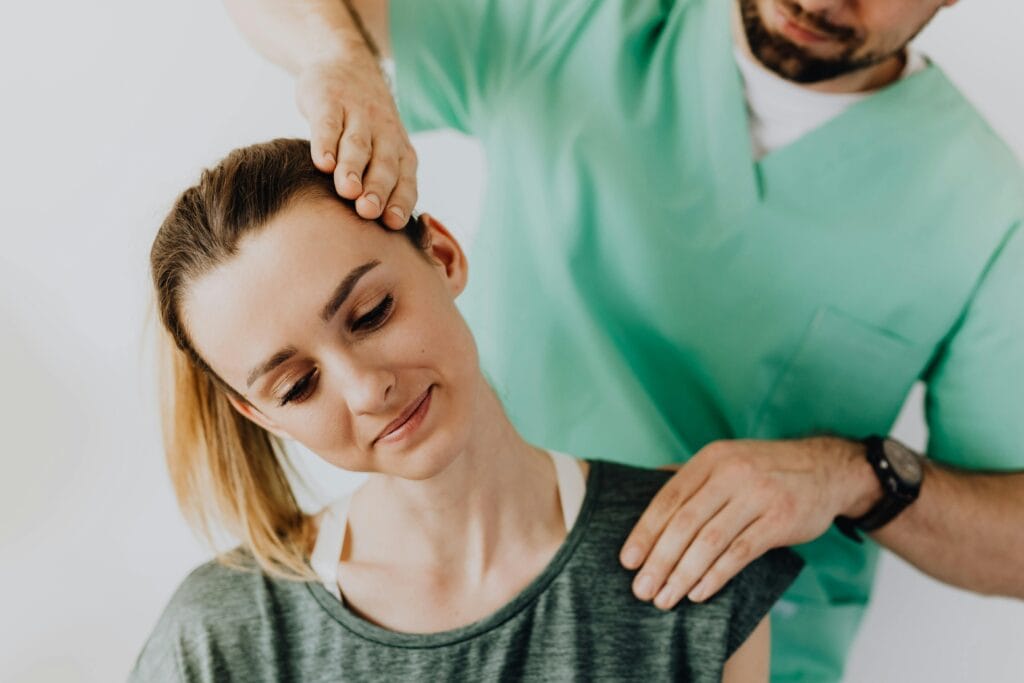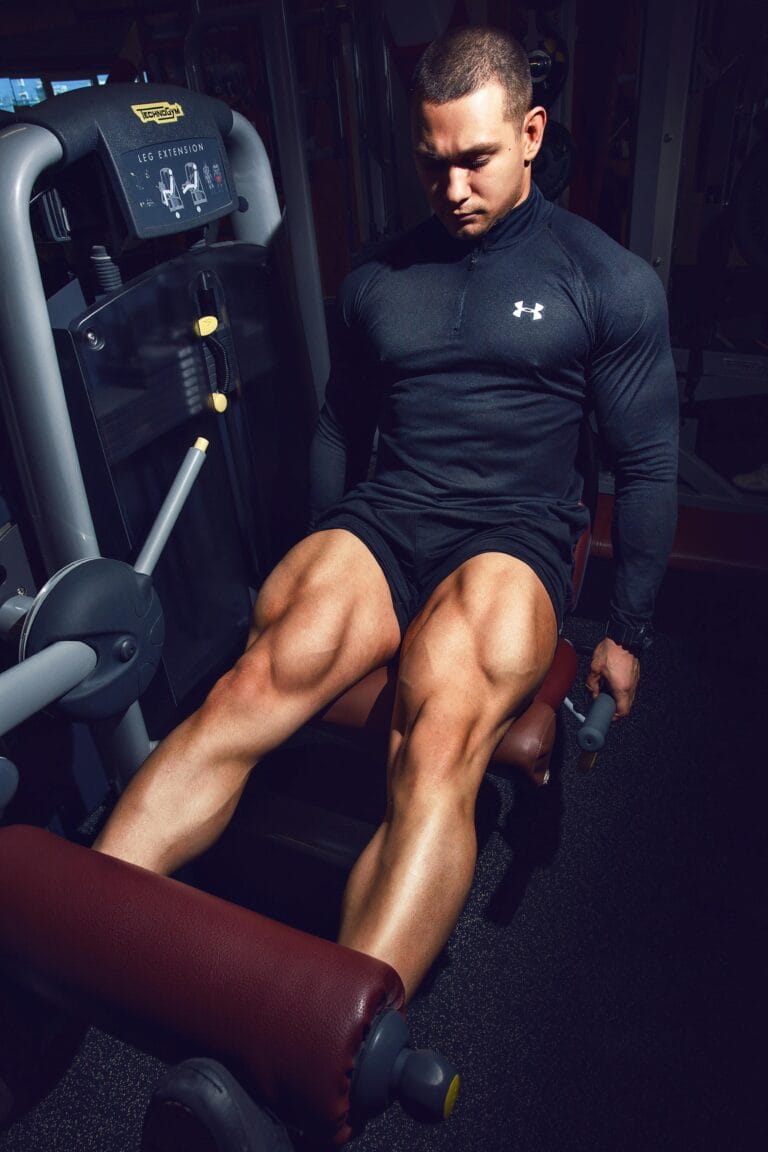FREE SHIPPING OVER $50
Chiropractor’s Secret: 5 Exercises That ERADICATED My Neck Hump & Fixed My Posture! (My Results)

Let’s get real for a moment: if you’re reading this, chances are you’ve noticed it. That little (or not-so-little) rounded hump at the base of your neck, often referred to as a “neck hump” or “dowager’s hump.” Or perhaps you constantly feel like you’re slouching, no matter how hard you try to sit up straight. I’ve been there. For years, I struggled with persistent poor posture, neck pain, and a noticeable hump that made me feel self-conscious and, quite frankly, uncomfortable.
I tried everything from consciously “sitting up straight” to generic stretching, but nothing truly seemed to stick. The neck hump persisted, and my posture remained stubbornly slumped. It was frustrating, to say the least. That is, until I consulted a fantastic chiropractor who revealed a secret weapon: a specific set of 5 exercises designed to tackle the root causes of both the hump and the slouched posture. And let me tell you, the results were nothing short of transformative.
My Posture Journey: From Slouch to Standing Tall
Before I get into the exercises, let me paint a picture. My desk job, combined with a habit of endlessly scrolling on my phone, slowly but surely transformed my upper back. I started noticing a rounded curve just below my neck, and my shoulders seemed to be perpetually rolled forward. This wasn’t just an aesthetic concern; it came with a host of uncomfortable symptoms:
- Persistent neck pain and stiffness, especially at the end of the day.
- Headaches that seemed to originate from the base of my skull.
- A general feeling of fatigue in my upper back.
- And yes, that undeniable “neck hump” that made me feel like I was aging prematurely.
I knew I needed a change beyond just telling myself “shoulders back, chin up.” That’s when I decided to visit a chiropractor, hoping for some real, actionable advice. And boy, did I get it.
My chiropractor explained that the neck hump and poor posture are often a result of a combination of factors, including:
- Weak upper back muscles: When these muscles aren’t strong enough to hold your shoulders back and chest open, your head naturally drifts forward.
- Tight chest muscles: Prolonged sitting and rounded shoulders cause the muscles in your chest to shorten and tighten, pulling your shoulders forward even more.
- Forward Head Posture: This is when your head juts out in front of your body, putting immense strain on your neck and upper back. For every inch your head moves forward, it can add an extra 10 pounds of pressure on your neck! Over time, this chronic stress can lead to the formation of that fibrous, fatty tissue that makes up the neck hump.
- Lack of awareness: We often don’t realize how much we’re slouching until it’s too late.
The solution, my chiropractor explained, wasn’t just about “pulling your shoulders back.” It was about strengthening the right muscles, stretching the tight ones, and retraining your body to maintain a more aligned position. He then introduced me to 5 targeted exercises.
The 5 Exercises That Changed Everything
When my chiropractor first showed me these 5 exercises, I was a little skeptical. They seemed so simple! But he assured me that consistency was key, and focusing on proper form would yield incredible results. And he was absolutely right.
I committed to doing these exercises daily, taking just 10-15 minutes out of my morning or evening. Here’s exactly what I did, and why each move is so powerful for fixing posture and eradicating a neck hump.
1. Wall Angels
Why it works: This exercise is fantastic for improving thoracic spine mobility (the middle part of your back) and strengthening the muscles that retract your shoulder blades. It helps to open up your chest and pull your shoulders back, directly countering the rounded posture that contributes to a neck hump.
How to do it:
- Stand with your back flat against a wall, making sure your head (or as close as possible), shoulders, and hips are touching the wall.
- Your feet should be about 6 inches away from the wall.
- Bring your arms up into a “field goal” position, with your elbows bent at 90 degrees and the backs of your hands and forearms pressed against the wall.
- Keeping your back, head, and arms in contact with the wall, slowly slide your arms straight up overhead, like you’re making a snow angel.
- Go as high as you can without letting your back arch or your arms come off the wall.
- Slowly slide your arms back down to the starting position.
- My experience: This one was tough at first! My shoulder blades felt incredibly stiff. But with each repetition, I could feel my upper back activating, and it gradually became easier.
2. Chin Tucks (Cervical Retractions)
Why it works: This is a cornerstone exercise for correcting forward head posture, which is a major contributor to the neck hump. It strengthens the deep cervical flexors in the front of your neck and stretches the tight muscles at the back of your neck.
How to do it:
- Sit or stand tall, looking straight ahead.
- Gently pull your chin straight back, as if you’re trying to make a double chin. Your head should move straight back, not tilt down.
- You should feel a stretch at the back of your neck and a contraction in the front.
- Hold for 3-5 seconds, then slowly release.
- My experience: This felt awkward initially, like I was trying to disappear my chin. But within a few days, I noticed my head felt more “stacked” over my shoulders, and the strain on my neck significantly reduced.
3. Scapular Squeezes (aka Shoulder Blade Retractions)
Why it works: This exercise directly strengthens the rhomboids and trapezius muscles in your upper back, which are essential for pulling your shoulder blades together and down, opposing the forward hunch.
How to do it:
- Sit or stand tall with good posture.
- Imagine you have a pencil between your shoulder blades. Gently squeeze your shoulder blades together and slightly down, trying to “hold” that pencil.
- Keep your shoulders relaxed and down, not shrugging towards your ears.
- Hold the squeeze for 2-3 seconds, feeling the muscles in your upper back engage.
- Slowly release.
- My experience: I realized how weak these muscles were! At first, I could barely feel them. But with consistent effort, I started to feel a satisfying contraction, and my shoulders naturally started to sit further back.
4. Thoracic Extension Over a Foam Roller (or Rolled Towel)
Why it works: This exercise directly mobilizes the thoracic spine, which often becomes rigid and rounded in individuals with poor posture and a neck hump. It helps to restore the natural curve in your upper back.
How to do it:
- Lie on your back with a foam roller (or a tightly rolled towel about 4-6 inches in diameter) placed horizontally under your upper back, just below your shoulder blades.
- Support your head with your hands (fingers interlocked behind your head).
- Keeping your glutes on the floor, slowly extend your upper back over the roller, allowing your head to gently drop back towards the floor.
- Hold the stretch for 10-20 seconds. You can also gently roll up and down a few inches, pausing at any tight spots.
- My experience: This was incredibly satisfying, like getting a deep massage and a stretch all at once. I could literally feel my spine loosening up, and it brought immediate relief to my upper back tension.
5. Doorway Chest Stretch
Why it works: As mentioned earlier, tight chest muscles (pectorals) often pull the shoulders forward, contributing to rounded shoulders and a neck hump. This stretch helps to lengthen these muscles, allowing your shoulders to pull back into a better alignment naturally.
How to do it:
- Stand in a doorway with your elbows bent at 90 degrees and your forearms resting on the doorframe, at about shoulder height.
- Step slowly forward with one foot, leaning gently into the stretch until you feel a pull across your chest and shoulders.
- Keep your shoulders relaxed and down.
- Hold the stretch for 20-30 seconds.
- My experience: This felt like a huge release. I realized how “closed off” my chest had become. Doing this regularly made it feel much easier to maintain an open, upright posture.
My Shocking Transformation: The Amazing Results!
I won’t lie, it took commitment. I performed these 5 exercises every single day for about three weeks, and then consistently 5-6 times a week afterward. The transformation wasn’t instant, but it was undeniable.
- Week 1-2: I noticed a significant reduction in my neck pain and stiffness. My headaches became less frequent. I also became much more aware of my posture throughout the day.
- Week 3-4: My shoulders started to naturally sit back more, and my chest felt more open. When I looked in the mirror, the neck hump seemed less pronounced. I felt a subtle but noticeable improvement in my overall body alignment.
- Month 2-3: This is where the real transformation happened. The neck hump visibly decreased. It didn’t eradicate overnight, but the fibrous tissue seemed to soften and reduce. My posture felt natural and comfortable, not forced. I could sit and stand taller with ease. My energy levels even felt better, likely because I wasn’t constantly fighting against a slumped position.
- Long-Term (6+ months): My neck hump is practically gone, and my posture is consistently good. I still do these exercises a few times a week as maintenance, because they simply make me feel better.
Making These Exercises Work for You
If you’re ready to fix your posture and potentially eradicate your neck hump, here are some tips based on my experience:
- Consistency: Aim to do these 5 exercises daily, or at least 5 times a week, especially in the beginning. It’s better to do them for 10 minutes every day than for an hour once a week.
- Focus on Form: Proper technique is crucial. Watch videos, use a mirror, or even record yourself to ensure you’re doing them correctly. Bad form can do more harm than good.
- Start Gently: Don’t force anything. If a stretch feels too intense, ease into it. Your mobility will improve over time.
- Incorporate Throughout Your Day: Beyond dedicated exercise sessions, become more mindful of your posture while sitting, standing, and walking. Use these exercises as reminders to pull your shoulders back and engage your core.
- Ergonomics Matter: Assess your workstation. Make sure your computer screen is at eye level, your chair supports your lower back, and your feet are flat on the floor. Good ergonomics can prevent undoing your hard work.
- Hydration and Nutrition: Supporting your overall health with proper hydration and a balanced diet can aid in muscle recovery and general well-being, which contributes to better posture.
It’s important to remember that I’m sharing my personal experience with these exercises. If you have severe pain, a significant neck hump, or any underlying health conditions, always consult with a healthcare professional, such as a chiropractor or physical therapist, before starting a new exercise program. They can provide a proper diagnosis and personalized recommendations.
Conclusion
The journey to fixing posture and eradicating a neck hump might seem daunting, but with the right tools and commitment, it’s absolutely achievable. These 5 chiropractor-approved exercises were a game-changer for me, directly targeting the muscles and areas that contribute to these common issues. I went from feeling self-conscious and uncomfortable to standing taller, experiencing significantly less pain, and genuinely feeling more confident in my body.
If you’re tired of living with poor posture and a persistent neck hump, I encourage you to give these exercises a try. They are simple, require minimal equipment, and can be easily integrated into your daily routine. Take control of your posture, reduce your pain, and prepare to be amazed by your own transformation.
Related Articles
- Defy Age: 4 Strength Workouts to Rebuild Muscle & Boost Vitality After 50
- Men Over 45: Can You Pass These 5 Vital Strength & Longevity Tests?
- Is Your Workout HARMING You? 10 Science-Backed Ways Exercise Can Secretly Hurt Your Health
- Stop Dropping the Bar! The Ultimate Deadlift Grip Guide for Heavier Lifts
- The Pushup Test: Can You Out-Perform 90% of People Over 40?







